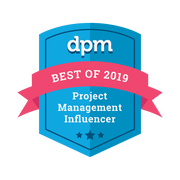2. Achieve a baseline budget. Formally get the estimate signed off by the sponsor and steering committee and ensure that the actual funds get released and allocated to the project. You now have a baseline budget to work from.
3. Establish monthly budget. Determine what you expect the project’s monthly running costs to be based on your knowledge of the project’s resource plan and schedule. Document the monthly expected expenditure in a spreadsheet encompassing the entire project.
4. Establish cost controls. Set up clear cost controls and sign-off responsibilities for the different types of expenditure. Consider who will be approving and signing off on timesheets, materials, hardware, software and vendor invoices. This part is crucial as this is where you control the actual costs that will be booked to your project.
5. Record actual costs. Check the actual amount of money accounted to your project at the end of each month. This figure will normally be provided to you by the finance department. Record this amount in your spreadsheet so that you can directly compare it to your budget.
6. Calculate metrics. Calculate and update your cost metrics at the end of each reporting period. Measure how much money the project has spent of the total budget compared to how much money you had expected it to spend at this point in time. Include your cost metrics into your project reports and steering committee presentations.
7. Update forecasts. Adjust your forecasts on a monthly basis to cater for any changes that have taken place. Changes could stem from the actual running costs being higher (or lower) than forecast or estimates being
higher (or lower) than forecast.
8. Communicate. Create transparency to senior management around the project’s costs by including your cost metrics and key numbers into your project reports and steering committee presentations. If for some reason your costs are not on track, treat it as an urgent issue which must be analysed, resolved and discussed with the steering committee.
If you liked this post, you may also like:
Risk management is how adults manage projects!
10 guidelines for estimating project effort
6 principles for building trusting and lasting relationships with your stakeholders
Top Tips for Gathering Requirements








 RSS Feed
RSS Feed